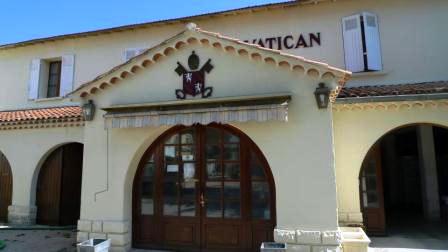1998 Cuvée du Vatican Châteauneuf-du-Pape Réserve Sixtine Châteauneuf-du-Pape Rhône France Wine Tasting Note
2914 Views
|
Fully mature, with an earthy, peppery, garrigue, truffle and kirsch nose, the wine is full bodied, fleshy, long and ready for prime time drinking. The wine was made from a blend of 50% Grenache, 30% Syrah and 20% Mourvedre, which explains its longevity. 2,914 Views Tasted Nov 14, 2015 |

When to Drink Cuvee du Vatican Sixtine, Anticipated Maturity, Decanting Time
Cuvee du Vatican Sixtine can be enjoyed on the young side. Young vintages can be decanted for about 1 - 2 hours, give or take. This allows the wine to soften and open its perfume. Older vintages might need very little decanting, just enough to remove the sediment.
Cuvee du Vatican Sixtine is usually better with 4-6 years of bottle age. Of course that can vary slightly, depending on the vintage. In the best vintages the wine should be consumed within 5-20 years after the vintage.
Serving Cuvee du Vatican Sixtine with Wine, Food Pairing Tips
Cuvee du Vatican Sixtine is best served at 15.5 degrees Celsius, 60 degrees Fahrenheit. The cool, almost cellar temperature gives the wine more freshness and lift.
Cuvee du Vatican Sixtine is best served with all types of classic meat dishes, veal, pork, beef, lamb, duck, game, roast chicken, roasted, braised, stewed dishes, barbecue, sausage and cassoulet. Cuvee du Vatican Sixtine is also good with Asian dishes, hearty fish courses like tuna, mushrooms pasta, eggplant, tomatoes and cheese.
The white wine of Cuvee du Vatican Sixtine is best served with a myriad of different seafood dishes, shellfish, crab, lobster, sushi, sashimi, chicken, pork and veal, as well as Asian cuisine.
The Sixtine estate and the Diffonty family also own 17 hectares of vines in the Southern Rhone Valley that are not classified.

